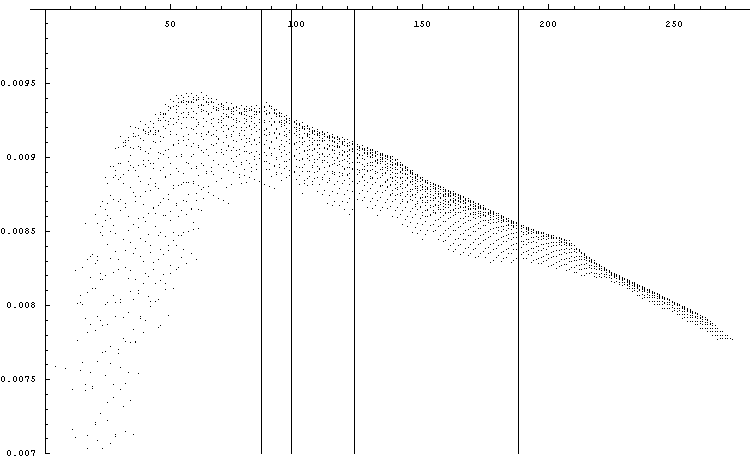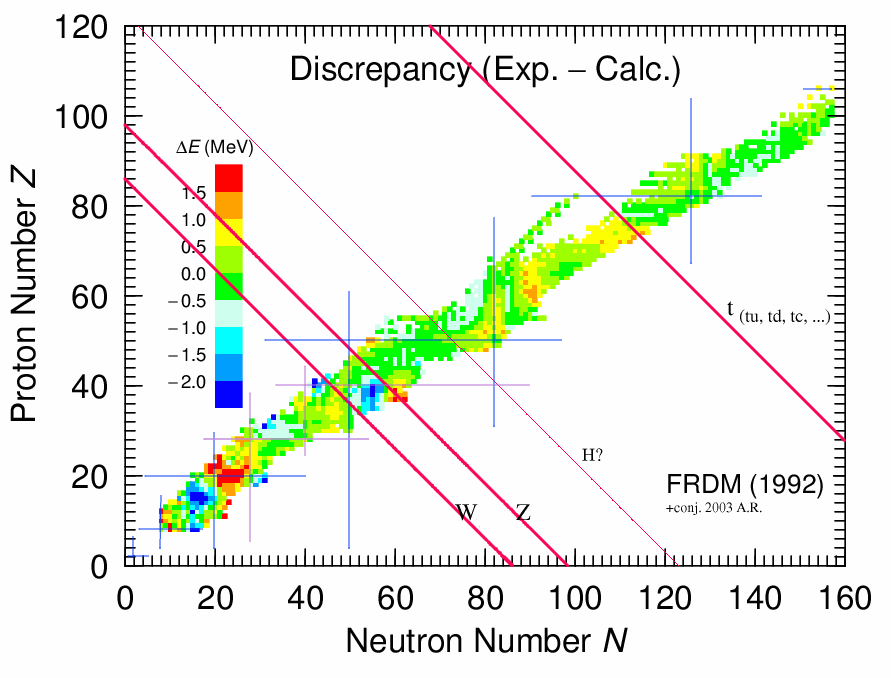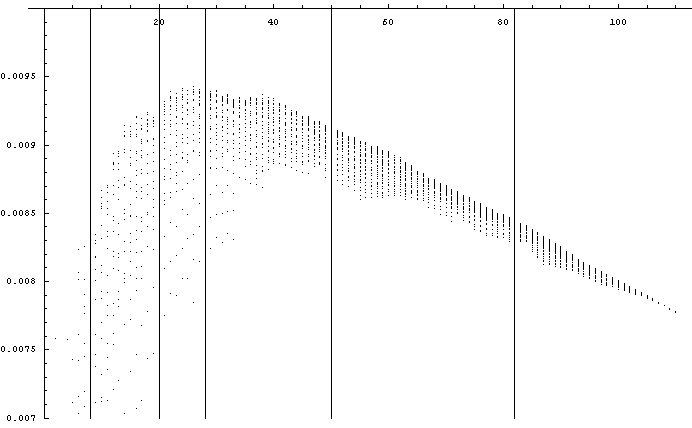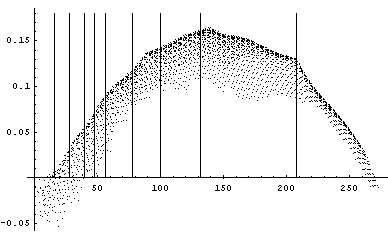
The nuclear spin-orbit coupling seems to be enhanced when a mediating boson of
mass equal to the total proton+neutron masses is available.
this webpage is a urgent, preliminar note. Check for a future article in
december 03 at the arxiv, or in my
main page.
You can find it slightly updated
respect to a textbook because I have used Audi-Walpstra's tables to draw it.

Amazingly, the small peaks in the descending part seem to happen web a new boson is available in the standard model:

Here the four lines corresponde to the masses of W, Z, Higgs (conjectured by LEP-2), and well, the top quark -ie start of top+antiquark bosons.
If instead of the experimental masses we plot the errors between
experiment and FRDM (the state-of-art micro-macro model), still we can
conjecture some relationship:

Time ago in the 60's, Talmi noticed that the proton shells move as the neutron shell of equal angular momenta fills. This was reported by Cohen, http://prola.aps.org/abstract/PR/v127/i2/p597_1
On the same token, if a magic number is the one which starts a level l-1/2, we can consider the "antimagic" number which starts filling the level l+1/2. This lets us define a rectangle before the corresponding doubly magic number, and we found that the diagonals of this rectangle braket more precisely the mass of the corresponding boson. This procedure is complicated precisely because the shell position move with the number of nucleons.
The method invites one to consider two separate sums, of the neutron and proton degrees of freedom, and then study how the two components couple between themselves. The data seems to indicate that the coupling enhances if mass_protons + mass_protons = mass_mediating_boson
Alejandro Rivero, 23.11.93



But wait! the peaks are explained by the magic numbers, are there? Well, it is partly true. Lets see:


 (perhaps the last one, but note also that at the end of the range the
neutrons outnumber the protons, so the plot paralells the one of N.)
(perhaps the last one, but note also that at the end of the range the
neutrons outnumber the protons, so the plot paralells the one of N.)
Well,OK, the magic numbers explain the peaks. Now, who does explain the magic numbers? In principle, they are proof of a strong spin-orbit coupling that separates the levels in a shell model creating the gaps at 50, 82 and 126. The lower gaps can be generated directly from a short range potential averaging the nuclear forces.
The hamiltonian containing the spin orbit is supossed to emerge from the local interactions at microscopic level, but the computation is hard so nobody has got a result beyond the cualitative for atoms lourder than 40 Ca [Brockmann 77, B & T 91]. Another model, the Nilsson Hamiltonian, adds a second term +D l^2, with the coefficient d depending on the shell number.
Could the SM bosons, even virtual as they are, to be a contribution to the coupling? Do they modify the density of nucleons? Does their total angular momentum couple to the J of the nucleus?



